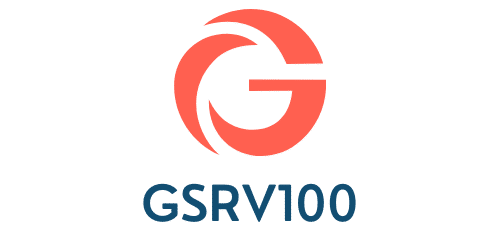How to Create a Diverse and Equitable Workplace in Small to Medium-Sized Businesses?

In a world growing increasingly diverse, the corporate environment must adapt and evolve to reflect this reality. Diversity, equity, and inclusion, commonly referred to as DEI, have become buzzwords in the business world. However, they are not just trendy concepts. They are crucial elements for any thriving workplace environment. In this article, we’ll delve into the importance of DEI in small to medium-sized businesses, and most importantly, how to create a culture that fosters diversity and inclusivity.
Understanding the Value of Diversity and Inclusion
Embracing diversity and striving for inclusion is more than just about adhering to societal norms and legal regulations. It’s about harnessing the power of varied experiences, perspectives, and backgrounds to drive your business forward.
Avez-vous vu cela : What Are the Strategies for Building a Strong Small Business Network?
In an increasingly globalized world, diverse workplaces are becoming the norm rather than the exception. A diverse team adds a wealth of knowledge, skills, and experiences to your company. It brings new perspectives and insights, leading to more creative problem-solving and innovation.
Inclusion, on the other hand, is about making sure everyone in your organization feels valued, heard and included. An inclusive environment is one where all employees are treated with respect and dignity, and where their contributions are valued. This fosters a sense of belonging, which in turn boosts morale, productivity, and overall job satisfaction.
A lire également : How to Leverage User-Generated Content for Small Business Marketing?
Inclusion is not just about numbers. It’s about creating a culture of belonging where everyone feels valued and heard.
Implementing Equity: A Fair Chance for All
Equity in the workplace is often misunderstood. It doesn’t mean treating everyone the same. Instead, it’s about acknowledging that not everyone starts from the same place and making sure everyone is given an equal opportunity to succeed.
Implementing equity in the workplace involves addressing barriers that prevent certain groups of people from accessing opportunities. This could involve providing additional support to those who need it, or it could involve changing company policies and procedures to make them more equitable.
By striving for equity, companies can make sure they are hiring and promoting the best talent, regardless of their background. It’s about leveling the playing field and ensuring everyone has a fair shot.
Best Practices for Fostering DEI in Your Workplace
Creating a diverse, equitable, and inclusive workplace is a continuous process that requires a genuine commitment from leadership and all members of the team. Here are some best practices to consider:
Lead by Example: The tone for DEI must be set from the top. Leaders should model inclusive behavior, actively promote diversity and equity, and hold everyone in the organization accountable for doing the same.
Hire Diverse Talent: This involves more than just checking off boxes. It involves actively seeking out talent from different backgrounds, experiences, and perspectives. This could involve partnering with organizations that cater to underrepresented groups, or implementing a blind hiring process to eliminate bias.
Promote an Inclusive Culture: This involves creating a culture where everyone feels they belong and their contributions are valued. This could involve creating employee resource groups, implementing mentorship programs, or providing training on topics like unconscious bias and cultural competence.
Evaluating Your DEI Efforts
Creating a diverse, equitable, and inclusive workplace is not a one-time thing. It’s a continuous journey. To ensure you’re on the right track, it’s crucial to evaluate your efforts regularly and make necessary adjustments.
This could involve conducting regular employee surveys to gauge how employees feel about the company’s DEI efforts. It could also involve tracking and analyzing data on things like hiring, promotion, and retention rates for different groups. Most importantly, it involves being open to feedback and willing to make changes when necessary.
Remember, the goal is to create a workplace where everyone feels valued, heard, and included. This not only benefits your employees, but it also makes good business sense. As the world continues to evolve, so must our workplaces. Diversity, equity, and inclusion are no longer optional—they’re a necessity.
Driving Change with DEI Initiatives
To foster a culture of diversity, equity, and inclusion (DEI), small to medium-sized businesses must take proactive measures to change existing norms. These changes often involve implementing various DEI initiatives that are designed to encourage a more diverse and inclusive work environment.
One effective initiative is the establishment of employee resource groups (ERGs). These are groups of employees who come together based on shared characteristics or life experiences. ERGs are a powerful tool for promoting inclusion and can provide a platform for underrepresented employees to share their experiences and perspectives. They also offer opportunities for networking and professional development, and can play a crucial role in decision making.
Mentorship programs are another effective DEI initiative. These programs pair less experienced employees with more senior team members, providing them with the support and guidance they need to succeed. Mentorship programs can also help to break down barriers and promote diversity by ensuring that everyone, regardless of their background, has access to the same opportunities.
Training and education are also important aspects of any DEI strategy. In particular, unconscious bias training can be very effective in helping employees recognize and overcome their own biases. This type of training can be a real game-changer, creating a deeper understanding of diversity and inclusion among employees and fostering a more inclusive workplace where everyone feels included.
By driving change through these DEI initiatives, small businesses can foster a work environment that not only values diversity and inclusion but actively promotes it.
Conclusion: The Power of a Diverse and Inclusive Workforce
In the era of global connectivity, fostering a diverse and inclusive workforce is not just an ethical imperative, it’s a business necessity. Small to medium-sized businesses that implement a strong DEI strategy stand to gain in several ways. They can attract a richer pool of talent, enhance their decision-making capacity, spark innovation, and improve their overall team dynamic.
Creating a conducive environment where employees feel included and valued requires a continuous commitment to fostering diversity, promoting equity, and encouraging inclusion. It requires strong leadership, a willingness to challenge the status quo, and a commitment to listen to and learn from the diverse perspectives of team members.
Moreover, genuine progress in DEI requires that businesses evaluate their efforts and identify areas for improvement. This might involve seeking feedback from employees, analyzing data from their DEI initiatives, or even bringing in an external consultant to provide a fresh perspective.
Ultimately, a diverse, inclusive, and equitable workplace is one where all employees, regardless of their backgrounds or identities, are recognized, valued, and engaged. This, in turn, drives business success. A commitment to DEI is thus not just about doing what’s right. It’s about fostering a work environment where everyone thrives, and in so doing, ensuring that your small business prospers in an ever-evolving world. In conclusion, diversity, equity, and inclusion are not just buzzwords, they’re central to the success of small to medium-sized businesses.
